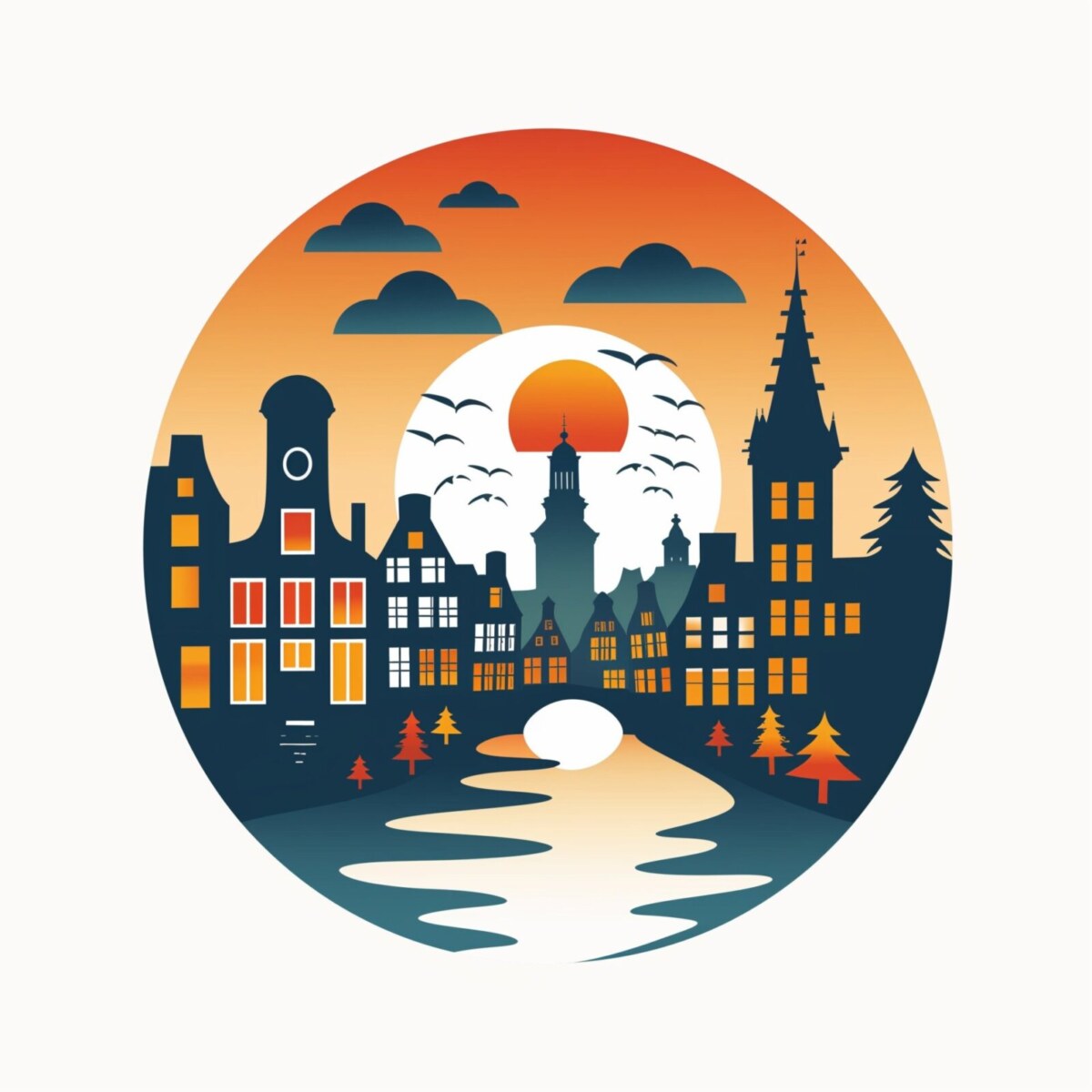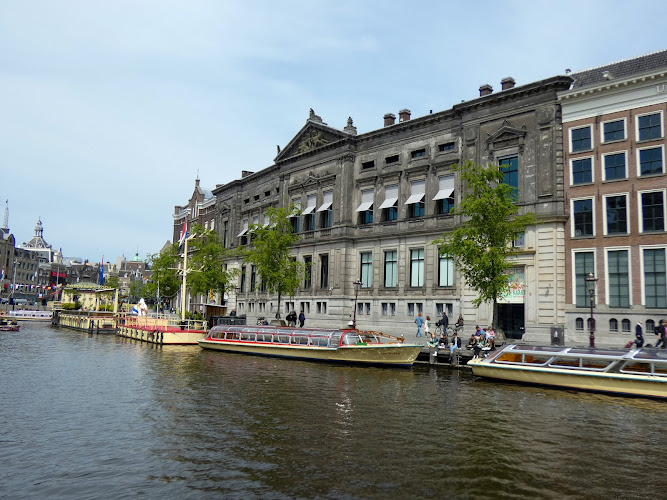In a repurposed bank building along Amsterdam’s historic canal belt, the Allard Pierson Museum of Antiquities houses nearly 20,000 artifacts spanning 10,000 years of cultural history. This archaeological museum of the University of Amsterdam displays treasures from ancient Egypt, the Near East, the Greek World, Etruria, and the Roman Empire. Visitors discover tangible connections between ancient Mediterranean civilizations and Amsterdam’s cultural evolution at this intersection of academic research and public education.
From Banking Hall to Archaeological Treasury
The museum commemorates Allard Pierson (1831-1896), the University of Amsterdam’s first classical archaeology professor. His Mediterranean travels inspired him to assemble a collection of plaster casts between 1877 and 1895—sculptures that formed the museum’s original core. His son later established the Allard Pierson Foundation in 1932 to make antiquities accessible for research and teaching.
The museum occupies the former headquarters of De Nederlandsche Bank at Oude Turfmarkt 127. This architectural transformation repurposed a financial institution into a cultural repository, with remnants of its banking past still visible—including the original rails once used for money transport. This adaptive reuse adds a distinctly Amsterdam layer to the museum’s historical narrative.
In January 2019, the institution significantly expanded by merging with the University of Amsterdam’s Special Collections. This union broadened the museum’s scope beyond classical archaeology to include book history, Jewish cultural artifacts, church history, cartography, graphic design, and zoology.
Core Collections That Illuminate Ancient Worlds
From the Nile to the Amstel: Tracing Cultural Connections
The flagship exhibition, “From the Nile to the Amstel,” presents a chronological progression through millennia of Mediterranean and Near Eastern history. Beginning with ancient Egyptian artifacts—including preserved mummies and ornate sarcophagi—the exhibition guides visitors through Near Eastern cultures before showcasing Greek and Roman artistic achievements. Digital interactivity, such as the hieroglyphics name translator, transforms abstract historical concepts into tangible experiences.
Egyptian Antiquities: Death, Divinity, and Daily Life
The Egyptian collection encompasses artifacts from 7000 BC to 1000 AD, documenting one of humanity’s longest continuous civilizations. A dedicated gallery explores Egyptian funerary practices through authentic mummies, elaborately decorated sarcophagi, and multimedia presentations on mummification techniques. The scale model of the Pyramid of Cheops contextualizes Egyptian architectural achievements, illustrating how these monuments dominated the ancient landscape.
Greek World: Artistic Innovation Across the Mediterranean
The Greek World collection spans territories from modern Iran and Iraq to Israel, Yemen, and Turkey, documenting cultural developments from 3000 BCE forward. The black-figure and red-figure pottery from the fifth and sixth centuries BC constitutes the collection’s centerpiece. These vessels—simultaneously functional objects and artistic canvases—reveal Greek mythology, social structures, and aesthetic values through their painted narratives.
Roman and Etruscan Material Culture
The Roman and Etruscan galleries feature practical objects that illuminate everyday life: ceramic vessels, glassware, coins, and household implements that ancient people used daily. Among the funerary objects, a remarkably preserved wooden coffin from approximately 150 AD stands out—a rare survival of organic material that provides direct evidence of Roman burial customs rarely seen in other European collections.
The “Gipsengalerij”: 19th-Century Archaeological Study
The museum’s attic houses the “Gipsengalerij” (Plaster Gallery), which contains Professor Pierson’s original collection of Greek sculpture casts. Available through scheduled tours, these plaster reproductions document 19th-century archaeological methodology, when museums and universities created sculpture replicas to teach classical art forms before photography became widespread.
A Cultural Refuge in Central Amsterdam
The museum complements its permanent collections with rotating temporary exhibitions that explore specialized aspects of Mediterranean archaeology and European cultural heritage. Full accessibility features include elevator access to all galleries, wheelchair-accessible restrooms, and trained staff available to assist visitors with mobility requirements.
Located centrally at Oude Turfmarkt 127, the museum connects directly to Amsterdam’s transportation network. Visitors can arrive via tram stop Spui (lines 2 and 12) or metro station Rokin (lines 52 and 54), both within 5 minutes’ walking distance.
Unlike Amsterdam’s major museums, which have inevitable crowds, the Allard Pierson provides a quieter, more reflective environment for engaging with ancient artifacts. Visitor reviews consistently highlight the elegant architecture, tranquil atmosphere, and bilingual exhibition texts in Dutch and English, which make collections intellectually accessible.
Experience the Ancient Mediterranean in Amsterdam
The Allard Pierson Museum offers academic rigor without academic barriers—presenting Mediterranean archaeology through a lens that is both scholarly and accessible. Here, Egyptian religious artifacts, Greek artistic innovations, Etruscan cultural practices, and Roman technological achievements are foundational elements of Western cultural development.
Visit the Allard Pierson to trace the threads that connect ancient Mediterranean cultures to Amsterdam’s history. This specialized museum creates meaningful perspectives on human creativity that span continents and millennia, all within a serene historic building at the crossroads of Amsterdam’s past and present.
Essential Visitor Information
Location: Oude Turfmarkt 127, 1012 GC Amsterdam, Netherlands
Hours: Tuesday–Sunday, 10:00–17:00 (Closed Mondays, April 27, December 25, January 1)
Admission: Adults €15.50 | Children 5-18 €3.50 | Under 5 Free
Discounts: Students €6.00 | I Amsterdam City Card holders Free
Reading Room Hours: Monday–Friday, 09:30–17:00 (Research by appointment)
Transportation: Tram 2, 12 (Spui stop) | Metro 52, 54 (Rokin station)
Website: www.allardpierson.nl
Contact: +31 20 5252556

